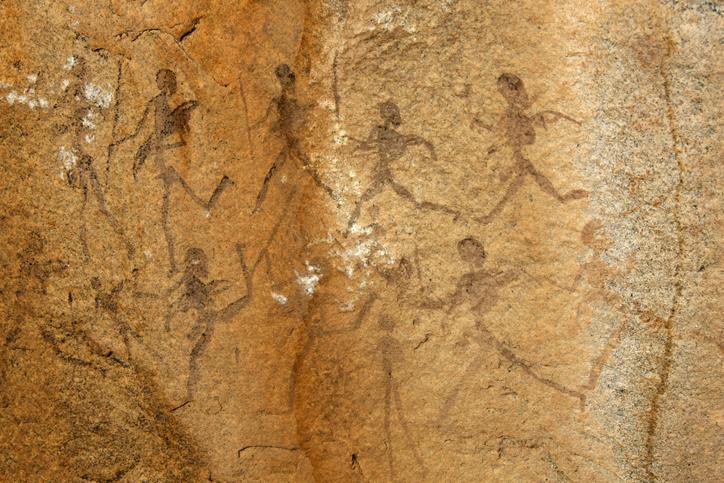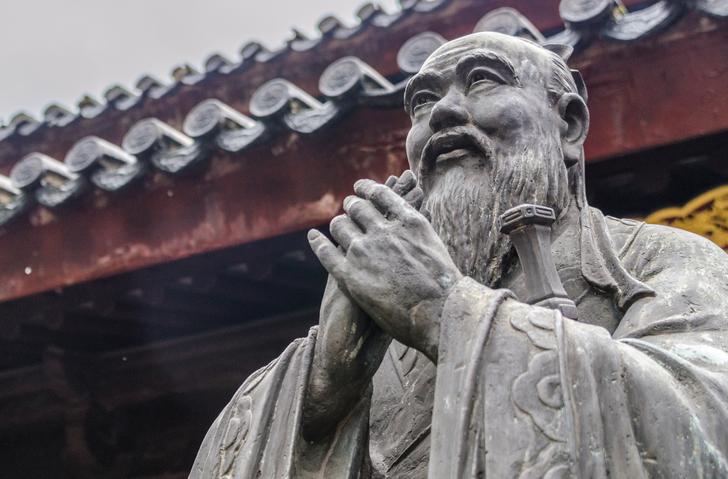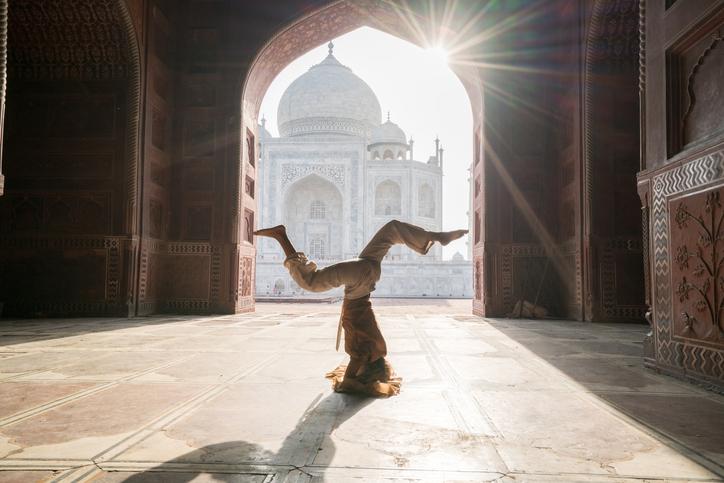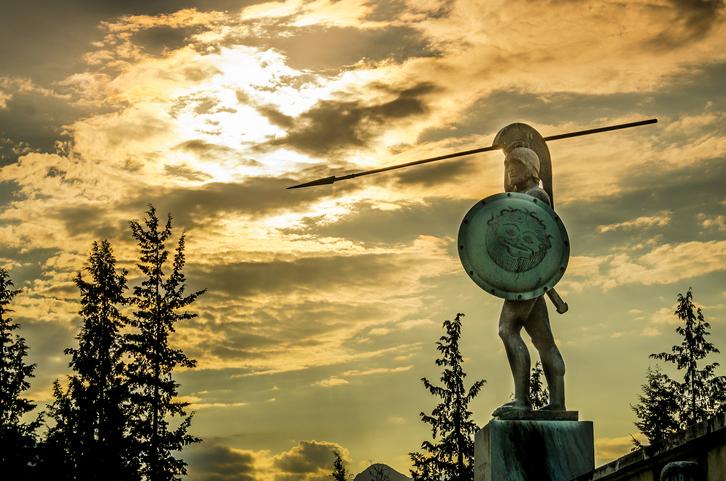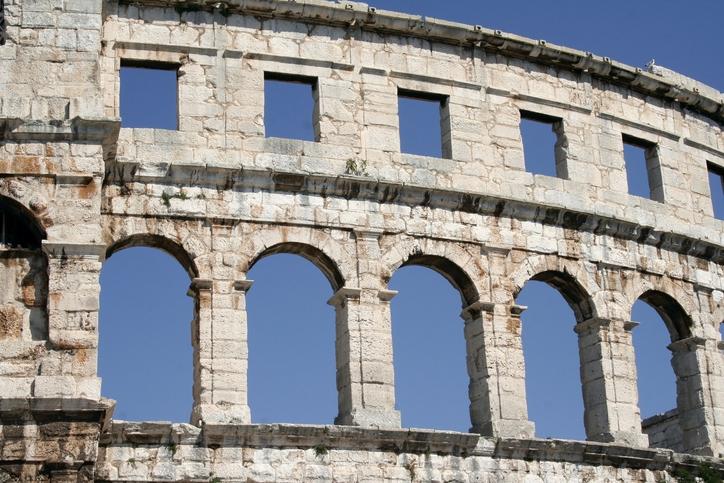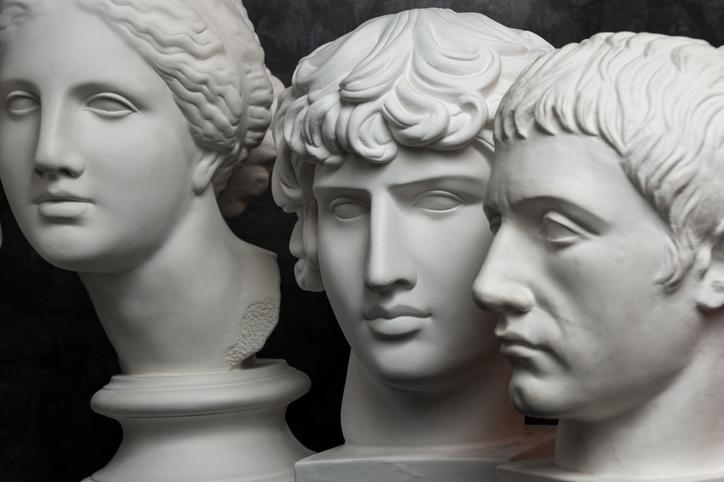The History of Physical Fitness: Part One
January 7, 2021
Jack LaLanne opened America’s first health club in 1936. Jane Fonda virtually created the fitness video industry in 1982. Richard Simmons had us sweatin’ to the oldies later in the ‘80s. This trio of health junkies are first-ballot Fitness Hall of Famers.
But if you want to know the real history of physical fitness, you’re going to have to look deeper into the history books. Wa-a-a-y deeper. Without further ado, here is Havasu Nutrition’s History of Physical Fitness (or How Humans Have Battled Beer Bellies for Millennia).
Primitive Fitness: The Caveman Workout
In the beginning, humans were a nomadic species who spent days hunting and gathering food for survival. It was physically exhausting just to stay alive. We were lean, mean hunting machines. Plus, humans learned to run, jump, climb, throw and fight larger animals. If you weren’t physically fit, you would not live long. There was no need for gym memberships or treadmills.
The Neolithic Era: Farming Made us Fat
Sometime around 10,000 BCE, humans invented agriculture and that was a game changer. Communities formed around the concept of farming. Some unknown genius caveman invented the plow. Another genius figured out that animals could be domesticated for food. The hunting and gathering days were over and humans developed a more sedentary lifestyle. And they started getting a little fat around the midsection. But human livelihood still depended on physical fitness.
To stay in shape, primitive man would celebrate harvests and animal kills by hiking miles and miles to visit neighboring tribes. They would dance and play cultural games and challenge each other to feats of strength. This kind of physical activity was the beginning of exercise for the sake of wellness.
Modern Stone Age family fitness
The Stone Age lasted about 3.4 million years, ending between 8700 and 2000 BCE. We’ll plug Fred Flintstone in right around here, because he used his legs for pedal power while commuting to the quarry. Wait, it was just a TV show? Yabba Dabba Doo!
Confucius: Spreading the Word in Asia
We all know that Confucius was one of the great philosophers of all time. But did you know that he was also responsible for guiding the Asian continent into a fitness craze? He understood the mind-body connection and evangelized physical fitness to prevent disease, illness and death. Around 550 BCE, Confucius helped develop Cong Fu gymnastics to help build strong bodies. Around this time, archery, badminton and fencing were all the rage in China.
Yoga: Combining Body & Brain
At about the same time that Confucius was doing his thing in China, things were happening in India, too. Buddhists and Hindus focused more on spirituality than physical fitness. But the Hindu culture figured out a cool way to position the body that opened up the pathways to spiritual health. The first yoga studios appeared in India about 500 years ago -- without the spandex.
Persian Empire Gets Serious
Between 4000 and 250 BCE, the globe was getting a bit tense. Civilizations were sprouting up all over the place -- Assyria, Babylonia, Egypt, Palestine, Persia, Syria. They were called civilizations, but they were not too civil to each other. Civilizations created militaries and armies needed to be physically fit. Persian leaders implemented strict training programs so their soldiers could expand their empire. Boys as young as six were taken from their homes to undergo physical fitness training regimens such as marching, riding, hunting and javelin throwing. The Persian Empire collapsed when the affluent society stopped emphasizing physical fitness.
Ancient Greeks and Sparta
The Greeks took physical fitness to the next level. Sure, they cared about health, but the Greeks considered the human body a work of art. They appreciated the beauty of a well-toned body. Hippocrates and other Ancient Greek philosophers believed physical well-being was essential for mental health. Physical education was taught in schools and Athens was the home of the original Olympic Games.
The Spartans of Northern Greece were even more into fitness than the Athenians. The big difference? Exercise was treated as a sport in Athens. In Sparta, it was used more for military superiority. According to most historians, military-focused Sparta was the most physically fit society in the history of mankind. (Womenkind, too. The women of Sparta were incredibly fit.)
The First Marathon Runner
The idea for the modern marathon was inspired by the legend of Pheidippides, an ancient Greek messenger who raced from the site of the Battle of Marathon to Athens, a distance of about 40 kilometers, or nearly 25 miles, with the news of an important Greek victory over an invading army of Persians in 490 BCE. After making his announcement, the exhausted messenger collapsed and died. To commemorate his dramatic run, the distance of the 1896 Olympic marathon was set at 40 kilometers, and eventually it became 26.2 miles. Today, social media is filled with Garmin pics of everyone’s 10K training run on the way to that next fabled marathon, maybe even a Boston Qualifier.
The Romans: A Cautionary Tale
While the Ancient Greeks were flexing their muscles, the Ancient Romans were getting in on the act. All males from ages 17 to 60 were eligible for military service, so fitness was paramount for the nation. In Rome between 200 BC and 475 CE, men were running, marching, jumping and doing all sorts of physical activity. They were so strong and powerful that the Roman Empire conquered nearly all of the Western World.
But history was not kind to the Romans. The power got to their heads. The society turned fitness into spectacle. Gladiators battled for their lives, at the whim of an emperor. (Being eaten by a hungrier animal at the Colosseum was not exactly the same as playing a game eons later in the L.A. Coliseum.) They had lavish lifestyles back then. Debauchery. Materialistic excess. A flabby population. Which led to . . .
Here Come the Barbarians
While the Roman Empire got fat and happy, the Barbarians from the North were looking to expand. They may have been less cultured than the Romans, but the Barbarians were fierce and, well, barbaric. The Dark Ages and Middle Ages were not a great time for intellectual pursuits or artistic endeavor. Physical force ruled the day and the Barbarians were the strongest on the planet.
The Renaissance of Physical Beauty
Finally, the Greeks and Romans got their act together and started taking physical fitness serious again. Especially the Greeks, who still had a strong esthetic sense for the perfect human form. Civilizations now understood empirically how valuable it was to have a strong, healthy population. Physical education became standard all around the developed world. Finally, it became obvious: Fat and lazy is no way to run an empire.
The Fitness Craze Spreads Across Europe
The 18th and 19th centuries marked a golden era for health and fitness in Europe. Exercise facilities sprouted up all over the continent -- from Norway to Italy to Great Britain to Russia. The science of physiology was taught everywhere. At this time, Europeans began exploring faraway lands and exporting the fitness craze. It really took hold in a land called America.
You will have to wait until our next installment to learn how the physical fitness movement migrated across the Atlantic. . .




